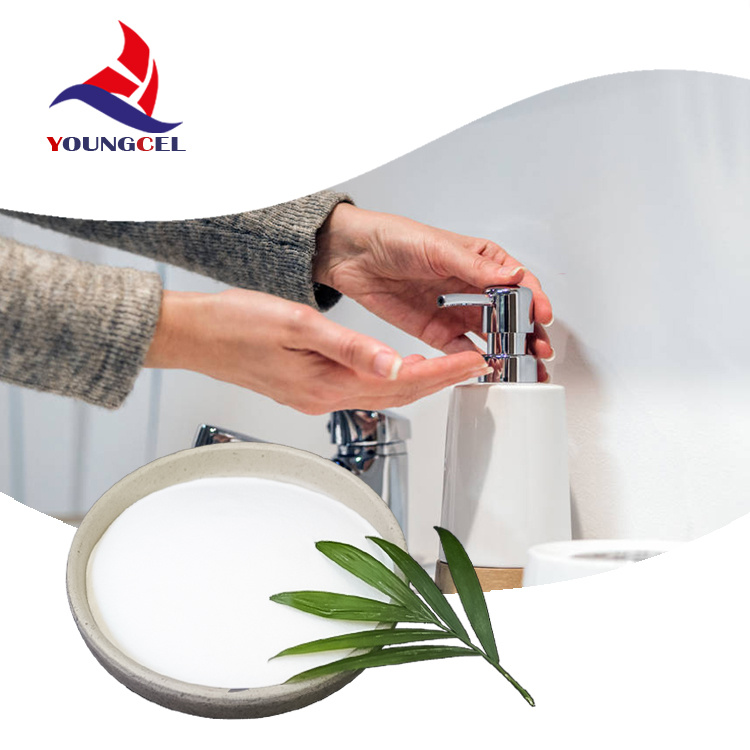Understanding Hydroxypropyl Methylcellulose (HPMC) and Its Applications
Hydroxypropyl Methylcellulose (HPMC), a non-ionic cellulose ether, is a versatile compound derived from natural cellulose. It has gained immense popularity in various industries due to its unique chemical properties, functionality, and adaptability. HPMC finds applications in pharmaceuticals, food production, construction, and personal care products, making it a vital component in many formulations.
Chemical Composition and Properties
HPMC is produced by modifying cellulose through etherification, where hydroxypropyl and methyl groups are introduced into the cellulose structure. This modification not only enhances the solubility of cellulose in water but also improves its viscosity, gel formation, and film-forming abilities. The degree of substitution (the average number of hydroxypropyl and methyl groups attached per glucose unit) can be tailored to meet specific application requirements. This versatility makes HPMC an attractive component for formulators seeking specific rheological properties.
One of the critical properties of HPMC is its ability to form gels and films upon hydration, making it an effective thickener and stabilizer in various formulations. Its hydrophilic nature allows it to absorb water and swell, creating a viscous solution that is ideal for controlling the release of substances in applications such as pharmaceuticals. Furthermore, HPMC is non-toxic, biodegradable, and free from animal-derived ingredients, which aligns with the growing demand for environmentally friendly and vegan products.
Applications in Pharmaceuticals
In pharmaceuticals, HPMC is extensively used as a binder, film coating agent, stabilizer, and controlled-release agent for drug formulations. Its ability to form gels makes it useful in tablet manufacturing, where it acts as a binder, ensuring uniformity and integrity of tablets during compression. Additionally, HPMC is employed in extended-release formulations, where it controls the drug release profile by forming a gel layer around the tablet core, allowing for a steady, sustained release of active ingredients over time.
HPMC’s film-forming properties make it suitable for coating tablets and capsules, providing a protective barrier that enhances the stability of the active pharmaceutical ingredients (APIs) and masks unpleasant flavors. This makes it a preferred choice in the pharmaceutical industry, especially for oral dosage forms.
chemic hpmc hydroxypropyl methyl cellulos hpmc

Role in Food Industry
In the food industry, HPMC serves as a thickening agent, emulsifier, and stabilizer. It is frequently used in low-fat and gluten-free products, improving texture and mouthfeel without adding calories. By enhancing the viscosity of sauces, soups, and dressings, HPMC contributes to the overall appeal of food products while maintaining their stability during storage.
Moreover, HPMC is utilized in the production of gluten-free baked goods, where it helps mimic the elasticity and texture provided by gluten. It allows for the creation of products that are not only palatable but also retain moisture and freshness over extended periods.
Applications in Construction
HPMC plays a significant role in the construction industry, especially in tile adhesives, cement, and plaster formulations. It improves workability, adhesion, and water retention in mortars and cement-based materials, leading to enhanced performance during application and curing. The inclusion of HPMC in these products allows for longer open times and better adhesion to various substrates, ensuring the durability and longevity of construction projects.
Conclusion
In conclusion, Hydroxypropyl Methylcellulose (HPMC) is a remarkable and multifunctional compound with diverse applications across various industries. Its unique properties, such as water solubility, film-forming abilities, and gel formation, make it an essential ingredient in pharmaceuticals, food production, and construction. As the demand for sustainable and allergen-free products grows, HPMC is likely to remain a key player in driving innovation and meeting consumer needs across various sectors.
-
Rdp Powder: Key Considerations for Wholesalers in the Building Materials IndustryNewsJul.08,2025
-
Key Considerations for Wholesalers: Navigating the World of Hpmc - Based ProductsNewsJul.08,2025
-
Hpmc Detergent: Key Considerations for WholesalersNewsJul.08,2025
-
Key Considerations for Wholesalers: China Hpmc For Tile Adhesive, Coating Additives, Concrete Additives, and MoreNewsJul.08,2025
-
Crucial Considerations for Wholesalers: Navigating the World of Construction MaterialsNewsJul.08,2025
-
Key Considerations for Wholesalers Sourcing Additive For Cement, Additive For Concrete, Additive For Putty from Additive Manufacturer Shijiazhuang Gaocheng District Yongfeng Cellulose Co., Ltd.NewsJul.08,2025




